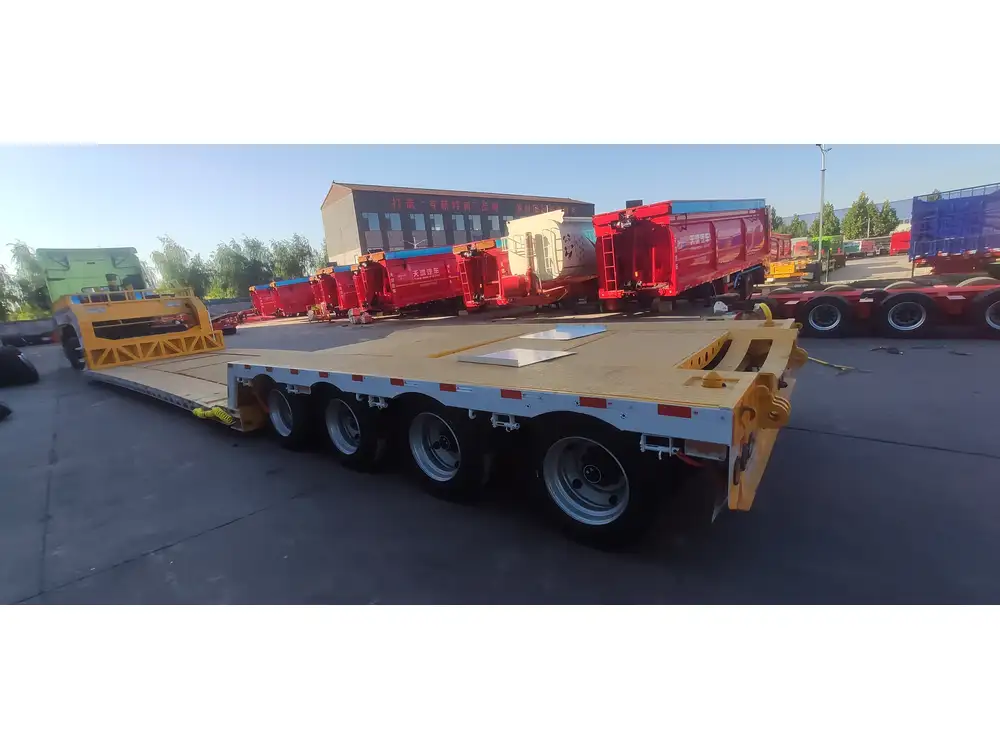Semi trailers constitute a critical component of the logistics and transportation industries, providing the essential backbone for freight movement across vast distances. Among various technicalities associated with semi trailers, the process of filling up the refer (refrigerated container) necessitates particular attention due to its implications for cargo integrity, temperature maintenance, and overall operational efficiency. This comprehensive guide elucidates the essential steps, considerations, and best practices for correctly filling up the refer on semi trailers.
Understanding the Refrigerated Container (Refer)
Before delving into the filling process, it is vital to understand the purpose and functionality of the refer. A refrigerated container, commonly referred to as a refer, is designed to maintain specific temperature conditions to preserve perishable goods. The temperature range typically varies from -20°F to +60°F, depending on the type of cargo being transported.
Key Features of a Refrigerated Container
| Feature | Description |
|---|---|
| Temperature Control | Offers precise control over cargo temperature. |
| Insulation | High-quality insulation materials to minimize heat transfer. |
| Ventilation | Equipped with ventilation systems to prevent odor build-up. |
| Monitoring Systems | Advanced monitoring technologies to track temperature and humidity. |

Step-by-Step Process for Filling Up the Refer
Filling the refer efficiently requires a systematic approach. Below is a detailed step-by-step process aimed at optimizing the filling operation while ensuring temperature management regulations are met.
1. Pre-Inspection of the Refer
Key Checks
- Cleanliness: Ensure the interior of the refer is clean and odor-free to prevent contamination.
- Temperature Settings: Verify that the temperature settings are appropriately calibrated for the type of goods being loaded.
- Equipment Functionality: Inspect the refrigeration unit, insulation, and ventilation systems for any signs of malfunction.

2. Preparing the Cargo
Before loading, it’s indispensable to prepare the cargo:
- Weight Distribution: Evaluate the weight of the cargo to ensure balanced loading. Heavy items should be evenly distributed to prevent tipping.
- Type of Goods: Classify goods based on temperature requirements. For instance, meats may need different conditions than dairy products.
3. Loading the Cargo
Loading techniques can impact both the integrity of the goods and the efficiency of the operation. Follow these crucial loading practices:
Cargo Loading Techniques
- Use of Pallets: Load items on pallets to facilitate air circulation, an essential aspect of maintaining the desired internal temperature.
- Spacing: Ensure there is adequate spacing between cargo to allow for airflow and temperature consistency.
- Securing Loads: Use proper securing methods (straps, nets, etc.) to prevent movement during transport.

4. Setting Temperature Parameters
Once the cargo is loaded, calibrate the temperature settings:
- Pre-cooling: Prior to filling, pre-cool the refer to between the required temperature ranges to ensure rapid cooldown of the loaded cargo.
- Monitoring Services: Utilize integrated monitoring systems to keep track of the temperature throughout the journey.
| Type of Cargo | Recommended Temperature |
|---|---|
| Fruits | 32°F to 55°F |
| Vegetables | 32°F to 41°F |
| Meats | 28°F to -4°F |
| Dairy Products | 28°F to 34°F |
5. Finalizing the Loading Process
After the loading and temperature settings are completed, confirm all procedures:
- Inspection: Conduct a final inspection to ensure all goods are securely in place.
- Documentation: Record the temperature settings and fill in any necessary shipping documentation. Ensure compliance with regulatory requirements.
Common Challenges and Solutions
The task of filling a refer can present various challenges. Below are some common issues and solutions to ensure smooth operation.

Challenger 1: Fluctuating Temperatures
Problem: Inconsistent temperatures during transport can lead to spoilage.
Solution: Use high-quality monitoring systems to track temperature changes continuously. Implement immediate adjustments if discrepancies arise.
Challenger 2: Insufficient Air Distribution
Problem: Poor air circulation can result in uneven cooling and hotspots within the refer.
Solution: Clearly define loading patterns to promote air circulation. Avoid overloading the refer.
Challenger 3: Regulatory Compliance
Problem: Noncompliance with health and safety regulations can lead to severe penalties.
Solution: Stay updated on local and international regulations regarding temperature-sensitive freight. Maintain meticulous records of temperature and humidity levels throughout transport.

Tips for Optimal Use of the Refrigerated Semi-Trailer
Maintaining optimal conditions in a refrigerated semi-trailer encompasses more than just the loading phase. Here are some additional tips to uphold excellent operational standards:
- Regular Maintenance: Schedule periodic maintenance for the refrigeration unit to prevent breakdowns during transport.
- Training: Equip all personnel involved in the loading and unloading process with training on best practices and compliance with safety protocols.
- Emergency Protocols: Develop robust emergency protocols that include immediate action in case of temperature irregularities or equipment malfunctions.
FAQs about Filling Up the Refer on Semi Trailers
What is the ideal temperature for perishable goods?
The ideal temperature varies by product. Generally, it ranges from -20°F for frozen foods to about 55°F for fresh fruits. Familiarizing yourself with these specifics will help maintain product quality.

How often should we check the temperature during transport?
It’s advisable to check the temperature at regular intervals, preferably every hour. Utilizing advanced monitoring systems can significantly ease this process.
Can I mix different types of products in one refer?
Yes, provided the goods have compatible temperature requirements. However, ensure thorough separation and follow guidelines to prevent cross-contamination.
Conclusion
Filling up the refer on semi trailers is a task that demands precision, adherence to regulations, and an understanding of temperature management dynamics. With careful planning, regular maintenance, and diligent execution of the outlined steps, we can ensure that our perishable goods reach their destination in optimal condition. This guide serves as a cornerstone for best practices in refrigerated transport, equipping manufacturers and logistic personnel with the essential knowledge required to excel in this domain.
By employing a structured approach to the loading process and actively addressing common challenges, we can enhance operational efficiency while maintaining regulatory compliance. Increased attention to detail in every phase of filling and maintaining a refer will not only preserve cargo quality but also bolster customer satisfaction and trust in our logistic capabilities.



